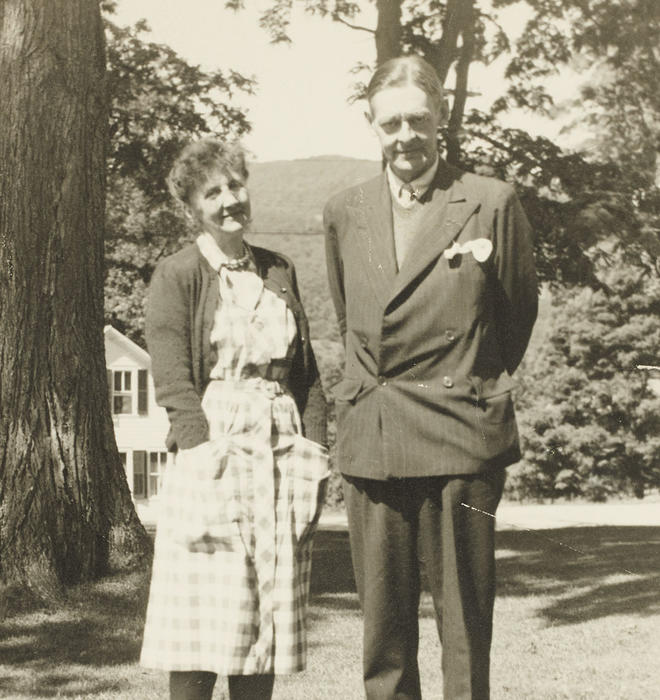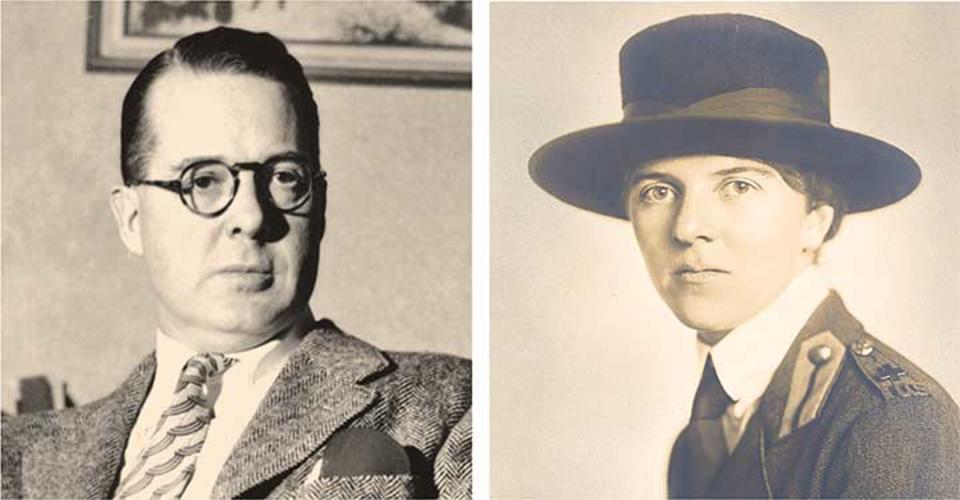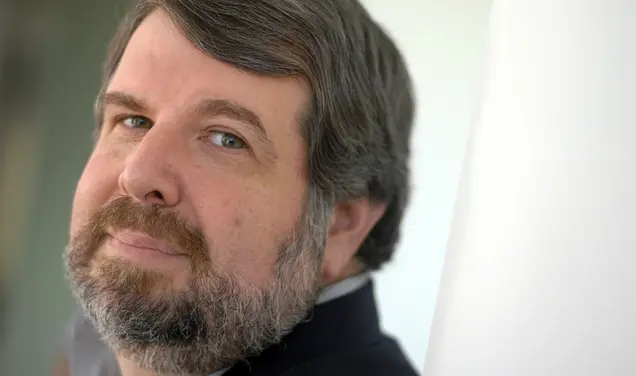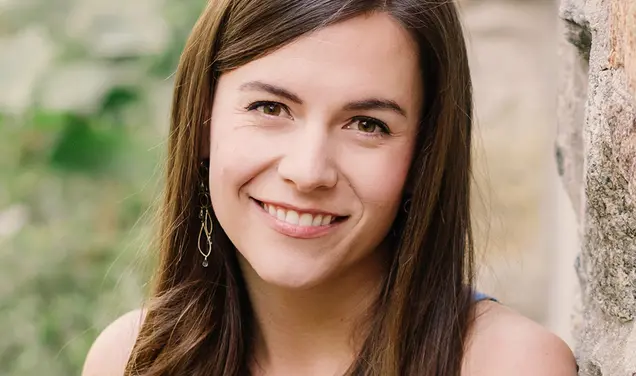
T.S. ELIOT scholars are gossips who live for drama, so on Jan. 2, when Firestone Library unsealed a set of letters that Eliot wrote to a confidante named Emily Hale, researchers began to live-tweet the archive’s opening as though they were chronicling television’s The Bachelor.
Eliot, a poet, essayist, and critic of the first half of the 20th century and winner of the Nobel Prize in literature, wrote “The Waste Land,” “The Love Song of J. Alfred Prufrock,” and the 1939 collection Old Possum’s Book of Practical Cats — which inspired the musical, and the recent movie, Cats. His doctrine of poetry said that critics should separate poems from the biographies of writers, but he also seemed determined to control the biographical details left to future readers of his poetry. When Eliot heard that Hale had given Firestone a collection of more than 1,000 letters he had written to her, which were to be kept under seal until 2020, he wrote an indignant letter to posterity that was kept under seal at Harvard until Hale’s collection was opened. The Harvard letter assures Eliot’s readers that, despite what the Princeton letters may say, he “was not in love” when he wrote them.“From 1947 on,” he wrote, referring to the year that his first wife died, an event that could have allowed him and Hale, a teacher of speech and drama, to conduct their love affair openly, “I realized more and more how little Emily Hale and I had in common. I had already observed that she was not a lover of poetry, certainly that she was not much interested in my poetry; I had already been worried by what seemed to me evidence of insensitiveness and bad taste.” The decades-long courtship could never have ended in marriage without a loss to world literature: “Emily Hale would have killed the poet in me.”
Upon reading that, one literary critic tweeted: “Read TS Eliot’s letter and feel like Emily Hale really dodged a bullet there.”
“More keeps trickling out on this TS Eliot/Emily Hale thing. Fourteen boxes of letters but dude then says ‘jk [just kidding], I didn’t really love her.’ ”
“Between CATS and his weird, defensive statement about Emily Hale, T.S. Eliot has been doing an awful lot to posthumously ruin his own reputation in the past month; very 2020 of him.”
Eliot met Hale in 1905, when he was 16 and she was 13. In 1914, he professed his love to her, then went abroad, believing, he said, that he could not propose without the money to support her. He moved to London and remade himself as a proper English gentleman in a three-piece suit, not even American in his accent. But he never stopped thinking about the woman from Boston, and, starting in 1930, they exchanged letters steadily for 26 years. These were passionate letters — perhaps more passionate because Eliot had married someone else in 1915. Love letters can be very intense when you know you aren’t going to make good on them.
Two months after their romance reignited in 1930, Eliot told Hale that he wanted her to preserve his letters in a library. Twenty-eight years passed before she gifted Eliot’s letters to Princeton, and by then, he no longer wanted to be remembered as her lover.
The opening of the Princeton letters came as a relief to scholars — the more so because they proved not to be idle talk, as some had feared. They show how thoroughly Hale, an ardent Unitarian and a minister’s daughter, informed the religious tenor of Eliot’s poetry. After the death of his first wife, Vivienne Haigh-Wood, he wrote still more amorously, but made no gestures toward marriage. “He loves me,” she told a confidant, “I believe that wholly — but apparently not in the way usual to men less gifted i.e. with complete love thro’ a married relationship.” Instead, he showed his love in the customary manner of many gifted men: by using her as a muse for his art and then shoving her off the pedestal to place his art there instead.
“He had a secret life that he was open about in these letters ... [H]e was writing to her constantly.” — Eliot scholar Frances Dickey
By Jan. 7, a humming news network was operating out of Firestone. The Eliot scholar Frances Dickey of the University of Missouri, supported by a grant from the International T.S. Eliot Society, visited Princeton to read the letters; every day, she wrote a summary of her reading for the Society’s blog. The blog had 4,000 hits in the first week. (Princeton classics professor Katerina Stergiopoulou *14 also wrote posts about the letters for Dickey’s blog: Eliot’s goal in writing to Hale, she remarked, seemed to be “to know her and be known by her as fully as possible.”) Michelle Taylor, a Ph.D. candidate at Harvard, created an electronic newsletter to send Dickey’s posts as news alerts to almost 150 scholarly inboxes.
Eliot sent Hale descriptions of his daily thoughts and experiences: the odors of springtime, which troubled him with memories; successful lectures that he gave at universities; bad tea; his Missouri boyhood; his need for whiskey to help him sleep; his irritation with his unintellectual relatives; his wife, who had, he complained, a child’s emotional maturity; his visits with the novelist Virginia Woolf, whose company he liked better than her novels; his moods. The letters will gratify those looking for private details of the poet’s life. Though their confidences did not extend, it seems, to sex, the lovers exchanged physical intimacies: They traded kisses, she sat on his lap. He told her, in French, that he kissed her hands; later, more boldly, he described himself kissing her feet. He told Hale that he slept with a woman who was not his wife, and a male friend once kissed him, which made him feel shocked and embarrassed, he wrote.
But the revelations from the letters about Eliot’s literary inspirations will have far more profound consequences. “He’s telling her that she’s basically been the muse of his poetry, that she’s the hyacinth girl and the lady of ‘Ash Wednesday.’ She’s his Beatrice, and the letters are his ‘Vita Nuova,’” says Dickey, referring to the poet Dante Alighieri’s chronicle of his love for his muse, Beatrice. The hyacinth girl is one of the most famous — and mysterious — figures in Eliot’s poem “The Waste Land,” appearing, with a charming voice, in a passage that feels like a memory:
“You gave me hyacinths first a year ago;
They called me the hyacinth girl.”
— Yet when we came back, late, from the Hyacinth garden,
Your arms full, and your hair wet, I could not
Speak, and my eyes failed, I was neither
Living nor dead, and I knew nothing,
Looking into the heart of light, the silence.
Volumes of material have been written on the meaning of this passage. Critics proposed that the hyacinth girl is Vivienne, who tended plants; that she is the poet Edith Sitwell, who moved in Eliot’s circle; that she is a product of pure imagination, a symbol of the renewal of spring. One suggested that “she” is a boy, and that we should read the word “girl” with an incredulous tone. Some guessed that the hyacinth girl might be Emily Hale, as biographers knew she had flirted with Eliot in 1914. Now we know for certain.
The takeaway from the letters is Hale’s importance to his work, and also the duration of Hale’s importance to his work: Eliot knew Hale at a younger age, and put more of her into his work, than anyone had guessed. “There have been suspicions that Emily Hale was a figure of some note in his life, but nothing like what these letters reveal,” says Dickey. “Now we see he had a secret life that he was open about in these letters. I mean these letters were his secret life. He didn’t meet Emily Hale often, but he was writing to her constantly.”Dickey, who is working on an annotated bibliography of Eliot scholarship, has been struck by how much will now need rewriting. “So much criticism has been rendered obsolete by that correspondence,” she says. “Decades of speculation about the literary sources of this or that reference in Eliot’s poetry have been undercut by the biographical identifications that his letters give for those references.” Eliot told Hale that references in his most famous poems invoke people they knew, memories they shared, or performances they attended together. His poem “Ash Wednesday” was a love song for her, he said — but as commentators on Dickey’s blog quickly noted, he dedicated that poem to his wife.
“You have made me perfectly happy: that is, happier than I have ever been in my life,” he told Hale in one widely quoted letter; “the only kind of happiness now possible for the rest of my life is now with me; and though it is the kind of happiness which is identical with my deepest loss and sorrow, it is a kind of supernatural ecstasy.”
John Haffenden, the editor of a forthcoming volume of the Hale letters from the publisher Faber and Faber, has denounced the blogosphere for circulating gossip, “rather scandalously in my view and unnecessarily,” before everyone sees the letters firsthand. But digital chatter takes nothing from the slow communion that historians call, unsubtly, the pleasures of the archive. Eliot fetishized the physical form of Hale’s letters, telling her that he had an insatiable appetite for the feel of the stationery and the sight of her spiraling script.
For the scholars who have made the pilgrimage to Firestone to see the letters themselves, Eliot’s letters, too, hold the presence of their maker: the paper; the letterhead; the master’s inscription, with typewriter crossings-out and blots from a lingering pen that tell stories of their own. (During a hectic time in his life, Eliot went for almost 18 months without replacing his typewriter ribbon.)
On the day that the letters were unsealed, when Firestone opened its doors at 8 a.m., eight scholars were already waiting outside, like fans lining up for tickets to a blowout concert. The library, anticipating a rush, had devised a ticket system for scholars to choose which folder to look at.
“The air was just incredibly charged with excitement,” says Dickey, who got ticket No. 1. “And the letters did not disappoint. The very first letter I looked at was an outpouring of emotion and self-revelation — very unexpected for a poet of such reserve. After I read a few letters, I jumped up and went to the end of the table, where Lyndall Gordon”— a famed biographer of Eliot — “was sitting, and I said, ‘Lyndall, you have to look at these letters.’”
That Hale’s letters are at Princeton — that the letters are in an archive at all — is the result of the heroic work of Willard *26 and Margaret Thorp, a Princeton power couple. Willard taught in the University’s English department, where he founded the American studies program; Margaret, who held a Ph.D. from Yale, wrote books and journalism. Margaret was a friend of Hale, and through that acquaintance, the couple became friends with Eliot. (Determined, as always, to exemplify English reserve, Eliot first addressed his letters to “Mr. Thorp”; then, years later, to “Thorp”; then, finally, to “Willard.”)
From early on, Eliot made noises about preserving his letters and Hale’s in a British library. Willard and Margaret recognized that deeds are better than words and importuned Hale to give her letters from Eliot to Princeton. They pleaded for the needs of future scholars, and they promised that the library would keep the gift secret, so that neither she nor Eliot would see their private lives become public. She assented, writing to Willard in 1956, “So, my friend, you can lick your whiskers metaphorically, that Princeton is to receive the collection; naturally you will realize this decision is due mainly to my years of friendship with you both.” Willard replied, “I do wish you had come here to see my face when I opened your letter and read of your decision to give to Princeton this fall all of your letters from T.S.E.! [A guest] was in the guest room, so Margaret and I had to have a discreet session of rejoicing out in the garage. This is one of the nicest things that has happened to the Thorps and we bless you for it. Margaret can’t lick her whiskers, but I lick mine — as you said I might well.”
Willard added, “I hope it will be a long time before scholars have access to this correspondence, but when they do they will surely find a treasure-horde.” An added pleasure came from showing up other Ivies: Colleagues at Harvard had been boasting to him about papers they had received from Eliot’s brother, and a colleague at Yale, which had received papers from Eliot’s biographer, “was patronizing about Mein Eliot materials.”
The University librarian at Princeton, William Dix, drew up the necessary forms and quietly stored the collection in a fireproof vault. (Willard assured Hale, “He is a most discreet person and a good friend of ours.”) Eliot’s response to hearing of Princeton’s acquisition is not recorded, but seven years later, in 1963, he burned his collection of Hale’s letters to him — the letters that he once promised to give to an archive together with his own. Had Hale sent him her collection to be kept in a British library — had Princeton not been, in Willard’s words, so “zealous for posterity” — then none of the Eliot-Hale letters would survive today.
More than this, Willard and Margaret persuaded Hale to leave to posterity her own account of her experiences with Eliot. She dictated one narrative to a tape recorder, which the University transcribed, and gave the Thorps a second on a set of notebook pages. (The University has made these documents available online, at bit.ly/hale-narrative.) When, after Eliot’s death, she wrote to the Thorps to ask that these gifts be returned, Willard agreed but asked her to reconsider:
“Margaret and I would ask you to wait a bit before destroying these records. Only think what is to come! In Tom’s lifetime there were books and essays beyond, I think, what any living poet ever knew. Now there will be a whole library of biographical works and special studies. The critics are already saying: ‘This was the Age of Eliot.’ And so it was. Dryden, Pope, Johnson, Coleridge, Tennyson, Arnold, Eliot. Questions will be asked — will still be asked, in A.D. 2015. (Isn’t that an ungraspable date?) ... Perhaps I am being too objective, thinking in too scholarly a fashion about what we have missed and may never know: about the thinness of our knowledge of Dryden’s personal life, about Tennyson and another Emily. If I am being too impersonal, chastise me and I’ll be ‘still as any mouse.’”
Hale agreed to let Princeton keep her narratives. In them, as though to shore an intense and turbulent correspondence against the stability of sexual propriety, she stresses that “we kept the relationship on as honorable, to be respected plane, as we could.”
“I was the confidante by letters of all which was pent up in this gifted, emotional, groping personality,” she wrote. After the death of Eliot’s first wife, Hale hoped that the relationship might culminate in marriage; but “instead of the anticipated life together which could now be rightfully ours, something too personal, too obscurely emotional for me to understand, decided T.S.E. against his marrying again. This was both a shock and a sorrow, though, looking back on the story, perhaps I could not have been the companion in marriage I hoped to be, perhaps the decision saved us both from great unhappiness I cannot ever know.”
“I was the confidante by letters of all which was pent up in this gifted, emotional, groping personality,” Hale wrote.
Do poets correspond with their lovers, or with posterity? Eliot’s anger over the letters, his desire in later years to destroy the correspondence, may have come from his desire to dictate the relationship between the “Tom” of his private signatures and the T.S. Eliot on the copyright pages of his books. Did he fear, once critics started to understand his poems, that her writing would strip away their remaining mystery? Did he regret the flares of vanity and temper that his letters reveal? Or had the Eliot who wrote those letters been, as the Harvard letter insists, merely in love with love, with the memory of himself as a young lover?
Haffenden told an interviewer that the letters are heart-rending: “How wonderful to receive these letters. I would fall in love with him instantly.” Dickey and Taylor are more circumspect.
“Why did she stay with him? He was a good writer,” Dickey says. “He’s so compelling in his professions of love. I honestly don’t understand what Eliot thought he was doing to Hale. I think he worked himself up to believe everything he told her, but there were aspects of his own feelings that were obscure to him, and he kept her at arm’s length in practice. I can’t explain why.”
“I want to try to be sympathetic to him,” Taylor says. “In the letters, he talks a lot about self-deception, and he’s so clearly deceiving himself. There are enough times when she seems to say, ‘Why don’t you divorce your wife?’ and he dodges that question in his reply. I don’t think he ever thought he was going to marry her. I think he convinced himself that she was on the same page. That she was getting what she wanted out of this relationship: friendship, admiration, fun times in gardens.”
Nothing, in the end, is unimportant. Willard and Margaret Thorp, conspiring with William Dix, sought to save everything they could of Hale and Eliot’s shared life on the page, from literary drafts to idle gossip. Their work followed through on a theory of literature: that literature relies on collaborative exchange, that poets mine ore from every seam of experience, that posterity may cherish any fragment rescued from the ruins of history. That everything in Eliot’s life informed his art, including the women he knew.
On her blog, Dickey wrote, “In entrusting Eliot’s letters to Princeton, Hale was only acting on his original wishes; in destroying hers, he attempted to erase the key to his poetry. Ironically or fittingly, his testament remains to tell us what he meant, after all.”
Elyse Graham ’07 is an associate professor of English at Stony Brook University.







3 Responses
Elizabeth P. Powell s’54 s*55
5 Years AgoRemembering Emily Hale
I write as an Abbot Academy 1956 graduate who is married to a Princeton graduate. Thus I grabbed and read the article by Elyse Graham ’07, “Letters to Emily,” in the March 18 issue.
As a devoted student of Emily Hale, who was the drama teacher and instructor in elocution at Abbot Academy, Andover, Mass., from 1947 to 1957, I was disappointed that you did not elucidate your readers a wee bit about Miss Hale. I never performed on stage but did get some corrections, always with a smile, on my speech (I was a Westerner from Colorado) and was taught to stand up straight, speak distinctly, and look the person in the eye. A classmate says T.S. Eliot came to Miss Hale’s class and read from “The Waste Land.” I went on to Smith College and discovered Emily Hale was in the same location, Northampton. She even remembered my graduation with congratulations and best wishes, a card I still have today.
E.E. Norris ’72
5 Years AgoThe Last Word? TBD
It’s fascinating that T.S. Eliot had such a close and enduring relationship with Emily Hale (“Letters to Emily,” March 18) and equally fascinating that voluminous testimony to it is finally available inside Firestone Library’s doors. Clearly, she was an inspiration to the man and his poetry for a time. Then, just as clearly, she was not — exhibited by Eliot’s own words and actions upon hearing that she had decided to make his letters available to the public. She wanted them out there. He wanted them burned.
Why? The question has relevance today. What constitutes intellectual property, and who has the right to claim ownership of it? Would he have put pen to paper had it not been for her? Should Emily have shared the Nobel with him?
The real revelation in days ahead will be how a relationship of the mind and a relationship of the heart like theirs can come together, create brilliance, then come apart. This may well be as revealing about Eliot’s verses as the volumes already written. Meanwhile, I think it’s a little early to condemn the poet for “shoving” poor Emily “off her pedestal.” Would the story be on PAW’s cover in 2020 without “the dude” who has caused such a tweet storm? TBD. Both of them seemed determined to have the last word. Emily may have it yet.
Edmonds Prufrock Mackey ’61
5 Years AgoPrufrock’s Source?
I read with great interest your article, “Letters to Emily” (feature, March 18).
Do you know the source of the surname Prufrock? I am relatively certain that its source is the family name of my great uncle, Harry Prufrock of St. Louis. I am told that Eliot’s sisters attended Mary Institute with his sister.
I might add that Eliot would be quite miffed by your reference to his “Missouri boyhood.” Those of St. Louis look East and are proud of that orientation. They are “St. Louisians,” not “Missourians.”